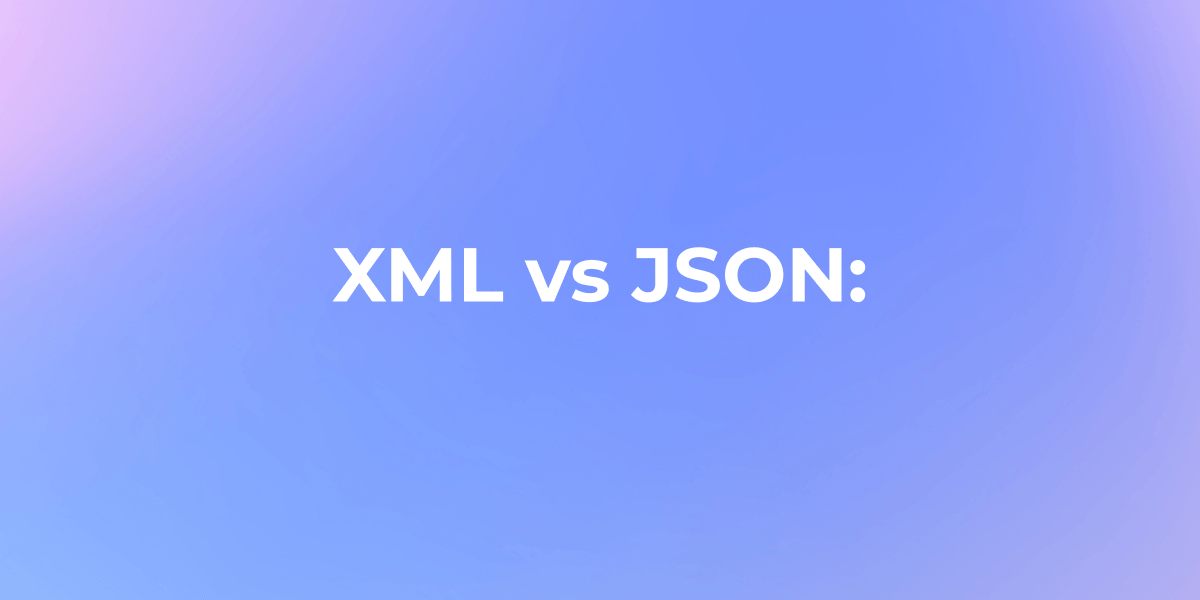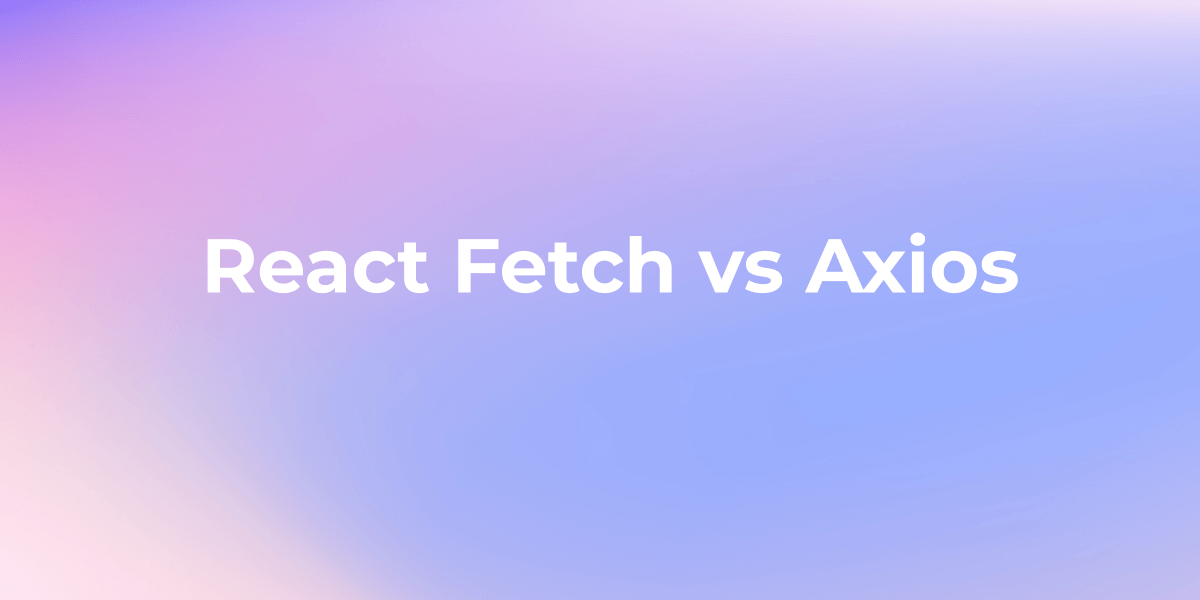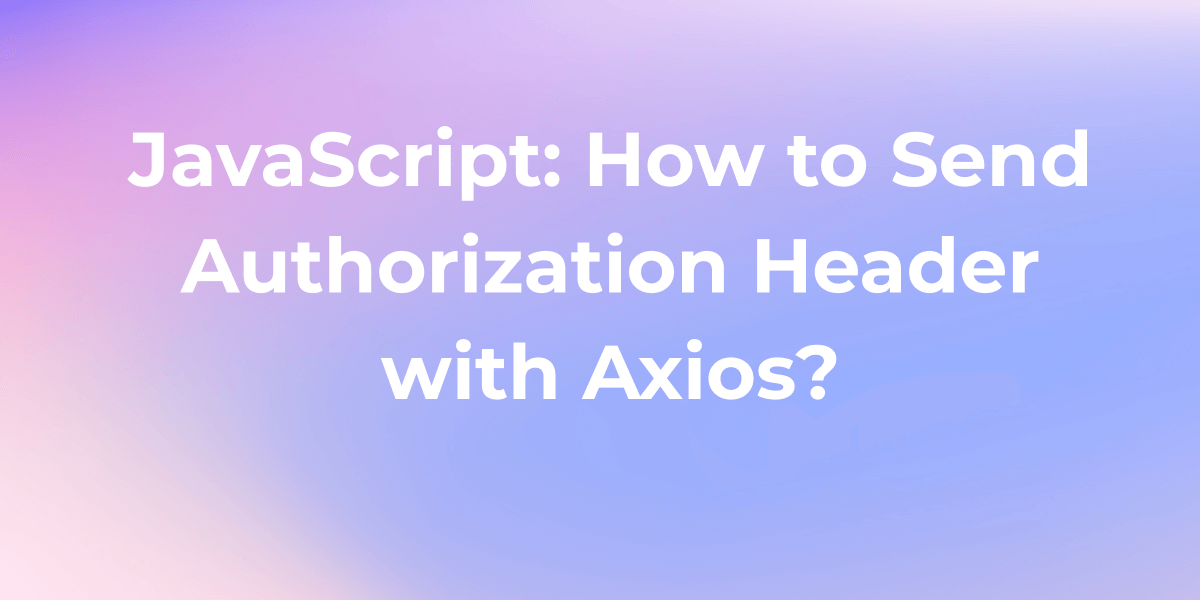# API Basics

How to Convert XML to JSON: A Step-by-Step Guide
Converting XML (eXtensible Markup Language) to JSON (JavaScript Object Notation) is a common task in web development and data interchange.

XML vs JSON: A Comprehensive Comparison of Differences
XML (eXtensible Markup Language) and JSON (JavaScript Object Notation) are both data interchange formats, but they have some key differences. Here are the main distinctions between XML and JSON.

React Fetch vs Axios: Comparing HTTP Request Libraries in React
Fetch is a native JS interface for HTTP requests supported by modern browsers. Axios is a more full-featured third-party library requiring installation. Axios provides richer features like automatic JSON parsing, error handling, interceptors.

How to Send Authorization Header with Axios
When working with Axios to make HTTP requests, adding an authorization header is a common requirement, especially when dealing with secure endpoints that require authentication. However, sending such headers in cross-origin requests may lead to complications.

What is HTTP Content-Type
Content-Type is essential in HTTP communication to specify the type of data being sent. This article introduces fundamental information about Content-Type, detailing its types and how to specify them when sending requests.

What is Form-Data Content-Type
Form-data is one of the formats for data sent from a web form. Specifically, it encodes values entered into a form as name-value pairs and sends them with the Content-Type header set to multipart/form-data.

What is cURL and What is the cURL Command Used for?
What is cURL in API?
"Curl" stands for "Client for URLs" and is a command-line tool and library for transferring data with URLs. It is widely used for making HTTP requests to interact with web APIs.

API Calls: What is an API Call and How to Make it
What is an API Call? An API call refers to the process of a computer program or application making a request to an external service or server, typically through an API (Application Programming Interface).

RAML vs YAML | What Are the Differences?
While RAML and YAML may seem similar and are often used in conjunction, they serve distinct purposes and have their unique features. In this comprehensive blog, we will delve into RAML and YAML, exploring their differences and applications to help you.

How to Convert XML Schema(XSD) to JSON Schema
XML Schema is used to define the structure and data types of XML documents, while JSON Schema is used to define the structure and validation of JSON data.

How to Send POST XML with Postman
In this article, we will explore the process of sending POST requests with XML data using Postman. We'll walk you through the steps to effectively send XML data to a web service or API, making it simple and easy to work with this common data format.

What is an API Endpoint?
An API endpoint can be considered a digital gateway or a specific location within an API where requests are received and responses are sent. It serves as the entry point for interaction with an API.

How Does an API Work with A Database?
Application Programming Interfaces (APIs) play a pivotal role in enabling interaction between software applications and databases, allowing for the retrieval, manipulation, and storage of data. In this post, we will delve deep into the world of APIs and explore how they work with databases.

What is History API
The History API is a feature in HTML5 that allows web developers to manipulate the browser history using JavaScript. It provides methods and properties to interact with the browser's history.

JavaScript - Variables: A Deep Dive
In JavaScript, variables are fundamental building g blocks that allow developers to store and manipulate data. A variable is essentially a named container that holds a value, which can be of various types, such as numbers, strings, objects, and functions.

What is Server-Sent Events (SSE)
In the ever-evolving landscape of web technologies, staying ahead of the curve is crucial. One such technology that has been gaining attention in recent years is Server-Sent Events, often abbreviated as SSE.